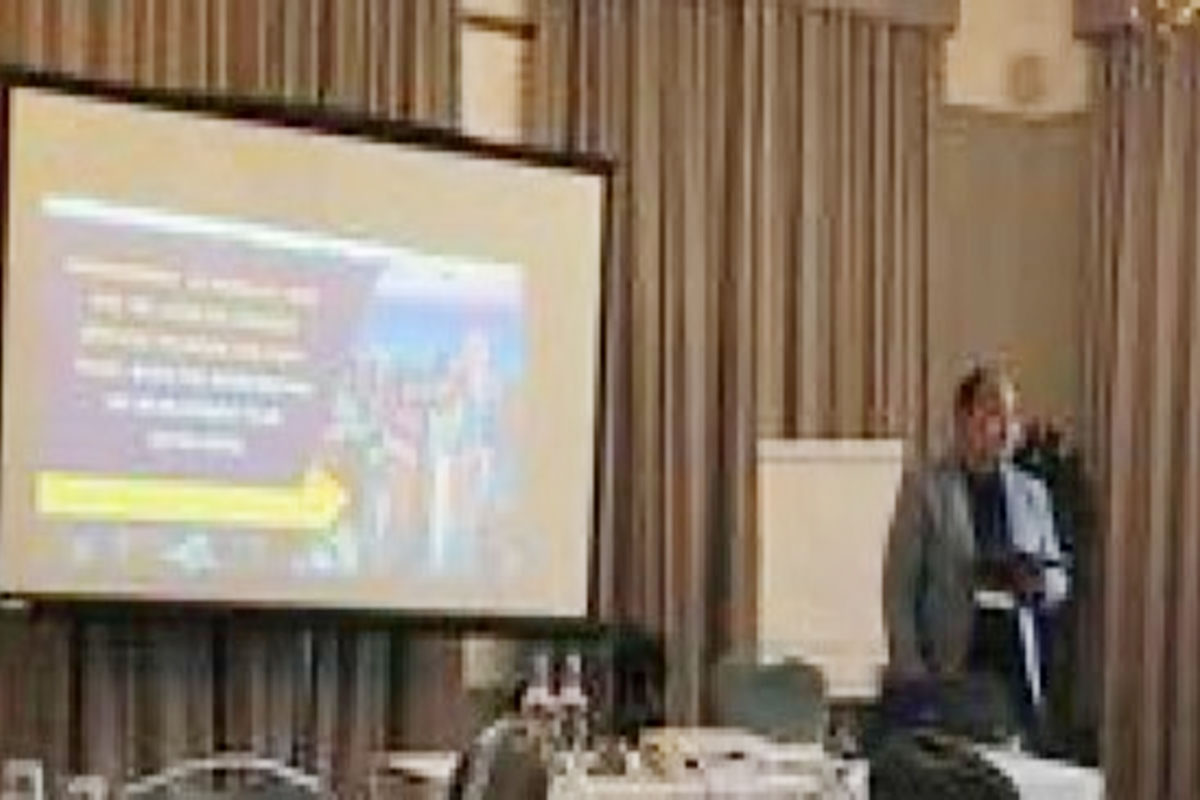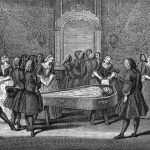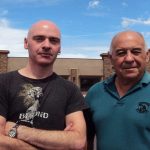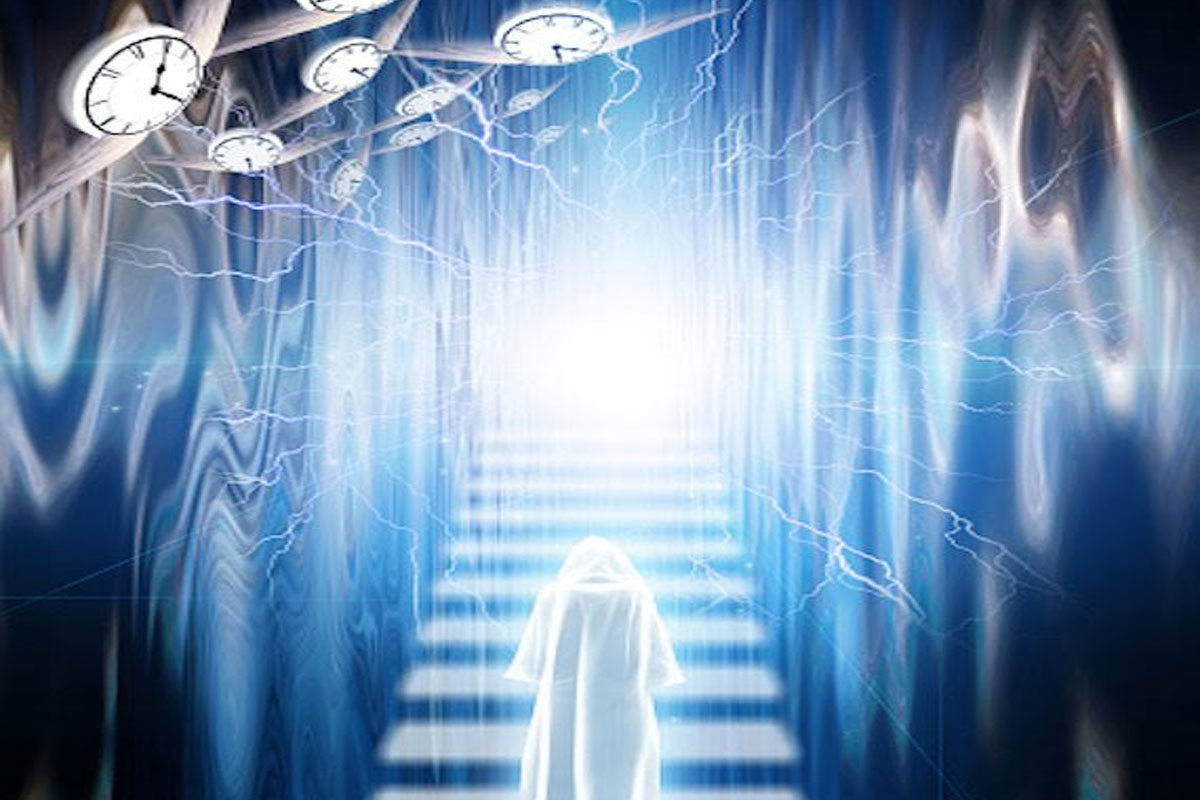
Bizarre Tales of Saints Who Could be in Two Places at Once
Brent Swancer March 4, 2022
It is a common saying to say that one can’t be in two places at once, but what if that was not necessarily true? Throughout history there have been decidedly bizarre accounts of mysterious individuals who have done just that, somehow managing to bend and subvert the laws of reality to literally exist in two places at the same time, those enigmatic people who have somehow managed to diverge into two separate physical forms to actually instantaneously and simultaneously be in two places at once, a phenomenon referred to as “bilocation.” Inexplicable, baffling, and always startling, these cases of people splitting into two hint at potential powers and forces at work around us that are far from being fully understood. The whole idea seems impossible when considering the rules of physics and matter that we are acquainted with, yet the accounts that speak to the contrary abound, and many of these have to do with saints, who seem to have had the power to do this almost at will.
The act of what is referred to as bilocation describes a person being physically in two locations simultaneously. It differs from other similar phenomena such as astral travel, (in which a person’s consciousness travels outside of the physical body, sort of like a living ghost) or other types of out of body experiences in that the individual does not appear in this second location as a wraith or ghostly, indistinct apparition, but rather as an apparently flesh-and-blood physical body, indistinguishable from a real person and their original self. The bilocator is typically described as being totally physically present in both locations, breathing, sweating, and able to touch things, eat and drink, or otherwise interact with their surroundings in a normal fashion. Bilocation also happens instantly, whereas with other types of out of body experiences there is often a sense of taking time to travel from one location to the next.
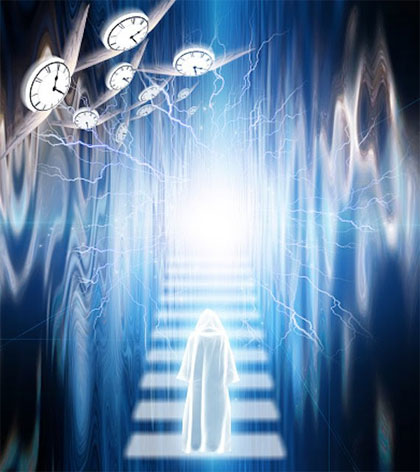 Although bilocation has been recorded in cultures around the world since time unremembered, some of the most numerous and spectacular cases of this phenomenon are inextricably tied to saints and other religious figures throughout history. Indeed, the ability to bilocate has long been considered by the Church to be a gift from God, a power bestowed onto those who require it for the purpose of attending to important matters and acts of mercy or charity some distance away, such as tending to the sick or dying, or at times when they need to do God’s will but cannot possibly physically be in a certain location under the circumstances. In fact, bilocation is so prevalent in the history of the Catholic church in particular, where its existence is considered a fact, that the Vatican considers it one of the core miracles required for sainthood, values it as a sign of high religious precept, and has researched and investigated the phenomenon extensively. The Vatican apparently has extensive, detailed files on these cases, and many of the numerous accounts of bilocation in church history are not mere lore and legend, but rather are well-documented phenomena that have been witnessed by various reliable witnesses and corroborated by those outside of the church.
Although bilocation has been recorded in cultures around the world since time unremembered, some of the most numerous and spectacular cases of this phenomenon are inextricably tied to saints and other religious figures throughout history. Indeed, the ability to bilocate has long been considered by the Church to be a gift from God, a power bestowed onto those who require it for the purpose of attending to important matters and acts of mercy or charity some distance away, such as tending to the sick or dying, or at times when they need to do God’s will but cannot possibly physically be in a certain location under the circumstances. In fact, bilocation is so prevalent in the history of the Catholic church in particular, where its existence is considered a fact, that the Vatican considers it one of the core miracles required for sainthood, values it as a sign of high religious precept, and has researched and investigated the phenomenon extensively. The Vatican apparently has extensive, detailed files on these cases, and many of the numerous accounts of bilocation in church history are not mere lore and legend, but rather are well-documented phenomena that have been witnessed by various reliable witnesses and corroborated by those outside of the church.
The phenomenon as it pertains to saints has been documented for centuries. One early account comes from the early 13th century, with St. Anthony of Padua, who was a Portuguese Franciscan friar and qualified medical doctor, and who was widely considered to be one of the finest physicians of the church. St. Anthony was known as a prolific worker of miracles, especially when it came to miraculous healings, and this earned him many nicknames, such as “The Wonder-Worker of Padua” and the “Evangelical Doctor.” Just as impressive was his apparent ability to be in two places at the same time. One of the most well-known and well-documented of these strange displays allegedly occurred during a service on Easter Sunday at the Cathedral of Montpellier. At the time there was a great congregation of both worshippers and other clergymen who had come to watch his sermon, but at one point Anthony realized that he had forgotten that he was to be singing on a choir at a nearby monastery at that very moment. In full view of everyone, he then calmly withdrew into the shadows of the pulpit and pulled his cowl around his face before proceeding to stand there silently and immobile. At that very instant he appeared among the choir at the other monastery singing. When the choir was finished, the still, silent body at the Easter service suddenly sprang back into action again and he continued as if nothing had happened, speaking with “incomparable eloquence.”
St. Anthony of Padua demonstrated bilocation on another occasion as he was officiating at the Church of St. Pierre in Limoges on Holy Thursday. In this instance, he again remembered he had somewhere else to be, at another service several miles away. In front of many witnesses he was claimed to have knelt to pray at the altar as the congregation waited, at which point he appeared out of the shadows at the other church some distance away to carry out his sermon there. When he was done, he purportedly walked back into the shadows just as he got to his feet from praying at his original sermon to finish as if nothing had happened. During this whole episode he was clearly seen by numerous churchgoers and reported as being physically present in both places at the same time. Indeed, such was the veracity of witness reports to these powers that one official once stated that “these miracles come to us on such high authority that it is impossible either to eliminate them or explain them away without doing violence to the facts of history.”
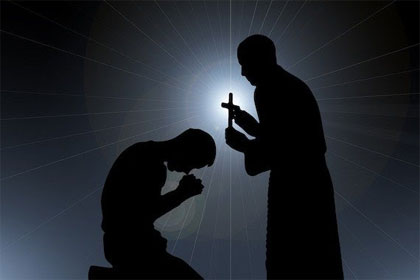 There are many other notable bilocating saints. In the 1500s, The Italian mendicant friar St. Francis of Paola was known for frequently exhibiting this power. Sometimes during his sermons he would be seen by his servants simultaneously tending to chores around the monastery or even cooking in the kitchen at the same time, with both bodies fully mobile and engaged in their tasks as usual, even making conversation. He would often do the same thing while engaged in prayer. On one occasion during a trip to Pterno he was seen to be praying while at the same time walking out on the street. A witness to this event described it thus:
There are many other notable bilocating saints. In the 1500s, The Italian mendicant friar St. Francis of Paola was known for frequently exhibiting this power. Sometimes during his sermons he would be seen by his servants simultaneously tending to chores around the monastery or even cooking in the kitchen at the same time, with both bodies fully mobile and engaged in their tasks as usual, even making conversation. He would often do the same thing while engaged in prayer. On one occasion during a trip to Pterno he was seen to be praying while at the same time walking out on the street. A witness to this event described it thus:
People who wanted to see him approached the chapel and found him so deep in prayer that they decided not to disturb him. When they returned to the street, they were surprised to see him talking to some people. They hurried back into the chapel and saw him still lost in prayer.
Also from the 1500s is the case of the missionary St. Francis Xavier, a one-time professor of philosophy at the University of Paris, who traveled extensively to such far-flung destinations as Ceylon, India, Japan and Malaysia for his work during the 1540s. During these travels he was often said to appear simultaneously in two or even three locations at once (trilocation), talking to native peoples separated by sometimes thousands of miles at the same time. He apparently did this on a very regular basis, to the point that it was seen as a fairly usual occurrence for him and did not particularly surprise those who were used to seeing him in action.
Another case form the era revolves around St. Martin de Pores, who had started out training to be a physician but had ended up at the Monastery of the Holy Rosary in Lima, Peru. Born in 1579, St. Martin de Pores did not even start out as a true member of the clergy, as he had always refused to train for the priesthood in favor of a simple, humble life doing various menial tasks around the monastery in the name of God. However, as much as he sought the simple life and a low profile he quickly became known for his spectacular ability to bilocate. Although he was well-documented as spending his entire life at the monastery, never leaving its grounds, it was reported that Martin would often instantaneously appear all over Lima, as well as in distant places as far-flung as Mexico, China, Japan, Africa, Algiers, France, and the Philippines, where he would engage in activities such as preaching, working with children, tending to the infirm or handicapped, and distributing food to the poor.
One well-documented instance of Martin’s bilocation was when he made a series of visits to North Africa where his work tending to the sick and clothing the poor was admired by a man who had been held prisoner in Barbary. Martin had come to him as well to offer aid. When the man was finally released he in later years found himself in Lima visiting the monastery there, where he happened to run into Martin by chance. He immediately tried to thank him, but Martin pulled him aside to tell him not to speak of what had happened in North Africa, as he did not want his supernatural powers to be widely known.
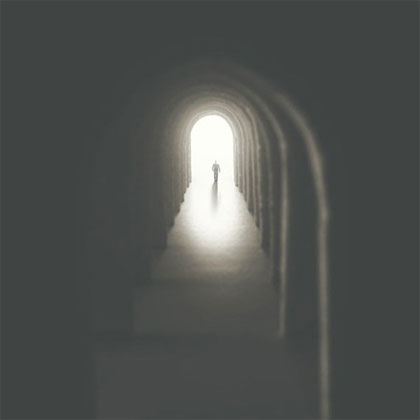 During these mysterious travels, Martin was said to be able to communicate fluently with people in any language, despite the fact that he had never studied a foreign language. He was also claimed to be able to appear even within locked rooms and prisons, where he would help those within. On at least one occasion he was claimed to have appeared on numerous occasions within a prison in North Africa in order to bring food and money to a man who had been wrongly imprisoned in Algiers by the Turks. The man eventually received enough money from the bilocating saint to pay his own ransom for his release.
During these mysterious travels, Martin was said to be able to communicate fluently with people in any language, despite the fact that he had never studied a foreign language. He was also claimed to be able to appear even within locked rooms and prisons, where he would help those within. On at least one occasion he was claimed to have appeared on numerous occasions within a prison in North Africa in order to bring food and money to a man who had been wrongly imprisoned in Algiers by the Turks. The man eventually received enough money from the bilocating saint to pay his own ransom for his release.
Martin was often known to impress visitors to the monastery with his detailed, intimate knowledge of the customs and cultures of these faraway lands, far more than he ever could have learned from books, even though he was known to have never left the confines of the monastery. Indeed, during these adventures in distant lands, which would have taken hours, days, or weeks to travel to physically, Martin was always among other monks and priests at the monastery, going about life and his chores as usual. He was never seen to leave, or to show any signs of slowing down, even as he was popping up in places all over Peru and the world, and by all accounts Martin truly seems to have been living two lives simultaneously. St. Martin’s numerous demonstrations of bilocation are extensively archived at the Vatican and were well documented and observed by a wide range of reliable witnesses from all over the world, further adding to his mystique. When asked how he was able to do it, Martin once said: “If God can multiply the loaves and fishes, why couldn’t he duplicate me?”
Another very famous bilocating saint was Alfonso de Liguori, or St. Alphonsus Liguori, of Italy, who was a bishop of St. Agata dei Goti in 1774. Alphonsus was once seen simultaneously both preaching a sermon at the pulpit and hearing confessions in another area. On another occasion St. Alphonsus was preaching to university students when a poor woman came to his usual church to receive her regular alms from him. She was told that Alphonsus was away at a sermon at that time and turned away. As she was leaving, he was said to appear before her to give her the alms only to disappear once again.
The most famous story involving St. Alphonsus’ bilocation powers supposedly occurred on the morning of September 21, 1774, when after giving mass in Arrezo he suddenly fell into his chair and went into a deep trance in which he seemed to be hopelessly lost deep in thought, in a state that one witness described as a “prolonged ecstasy.” In this trance he did not move or say a word, would not accept food, and gave no indication that he was aware of anyone around him. No one could snap him out of it, and he remained in this dazed state the entire day and night. The following morning he had not changed, remaining still frozen with that far-off, eery stare, his body still set in the same position, with only his breathing and sporadically blinking eyes providing evidence that he was even still alive at all.
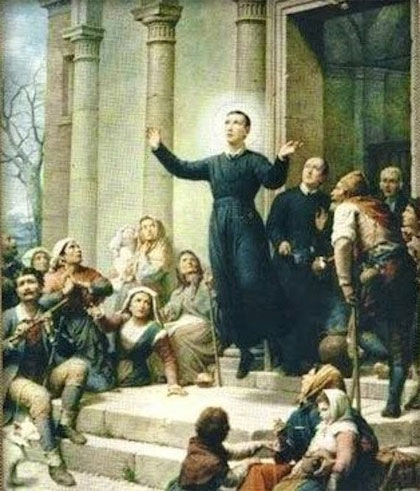 St. Alphonsus Liguori
St. Alphonsus Liguori
The servants and other clergy let him be, and were worriedly discussing what they were to do with him when there was a knock on the door. When the door was opened Alphonsus was standing there and stated that he was going to start mass, as if nothing had happened. When the surprised people in the room asked what had happened to him he did not seem to have any realization that he had been in a trance for a day and night. When confronted with this news, Alphonsus apologized and said that he had been away tending to the ailing Pope Clement XIV, who was located a full 100 miles away in Rome. He informed them that sadly the pope had just died. This was news to everyone present, but later that day word came that indeed the pope had passed away at precisely the time that Alphonsus had come out of his daze. The news included a list of clerics who had been present at the Pope’s side at the time of his death, and Alfonso de Liguori was clearly listed as one of them, which should have been impossible as he had been in his chair in a trance the entire time. Witnesses in Rome verified that Alphonsus had been there amongst them praying and talking, and they seemed to be just as surprised as anyone that he should be confined to his chair 100 miles away at the exact same time. This apparent miracle is in fact one of the things that later led to his sainthood.
What was going on in these cases? Is there anything to all of this? Can this all be merely written off as impossible and fanciful tales, the testimony of those involved brushed away in favor of the paradigm we know? If it is real, what lies behind this phenomenon? While the idea that someone could simultaneously physically inhabit two disparate locations hundreds or even thousands of miles away may seem to defy every law of physics and matter that we know of, perhaps we are getting into new territory here of forces that we have not even begun to comprehend. Bilocation continues to protrude from this veil of mystery from time to time, and will likely remain a conundrum for some time to come. Whether these various saints could really do any of this or not, it all remains a set of deeply weird historical oddities we may never understand.
MU*


